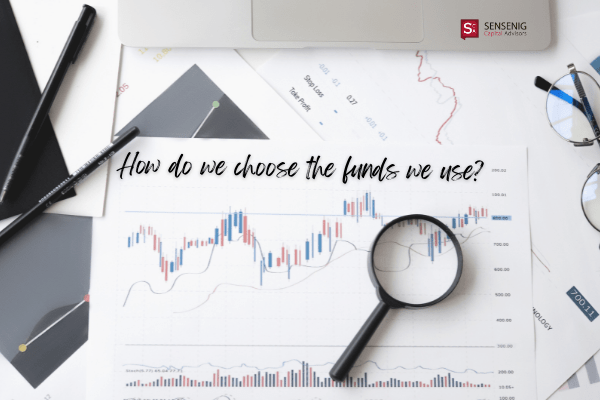In Part I of our three-part series on investing for retirement income in low-rate environments, we explained why we don’t advise bulking up on dividend-yielding stocks as a reliable way to generate retirement cash flow. Like the Three Little Pigs’ straw house, dividend-yielding stocks can disappoint you by exhibiting inherent risks just when you most need dependability instead.
Another popular tactic is to move your retirement reserves into high-yield, low-quality bonds. Let’s explain why we don’t typically recommend this approach either.
Part II: High-Yield Bonds – Sticks and Stones Can Break You
We can see why it would be appealing to try to have your bonds pull double-duty when interest rates are low: protecting what you’ve invested and delivering higher yields. The problem is, the more you try to position your fixed income to fulfill two essentially incompatible roles at once, the more likely you will underperform at both.
Risk and Return: The Same, Old Story (Sort of)
 In investing and many other walks of life, there’s nothing to be gained when nothing has been ventured. This relationship between risk and expected return is one of the strongest forces driving capital markets. But decades of academic inquiry helps us understand that the risks involved when investing in a bond – any bond – are inherently different from those associated with investing in stocks. These subtle differences make a big difference when it comes to combining stocks and bonds into an effective total portfolio.
In investing and many other walks of life, there’s nothing to be gained when nothing has been ventured. This relationship between risk and expected return is one of the strongest forces driving capital markets. But decades of academic inquiry helps us understand that the risks involved when investing in a bond – any bond – are inherently different from those associated with investing in stocks. These subtle differences make a big difference when it comes to combining stocks and bonds into an effective total portfolio.
Because a company’s stock represents an ownership stake, your greatest rewards come when a company’s expected worth continues to improve, so you can eventually sell your stake for more than you paid for it, and/or receive “profit-sharing” dividends along the way. Your biggest risk is that the opposite may occur instead.
A bond is not an ownership stake; it’s a loan with interest, which defines its two biggest risks:
- Bond defaults – If all goes well, you get your principal back when the loan comes due. But if the borrower defaults on the loan, you can lose your nest egg entirely.
- Market movement – You would like your bond’s interest rate to remain better than, or at least comparable to those available from other, similarly structured bonds. Otherwise, if rates increase, you’re left locked into relatively lower payments until your bond comes due.
As such, two factors contribute to your bond portfolio’s risks and expected returns:
- Credit premium – Bonds with low credit ratings (“junk” or “high-yield” bonds) are more likely to go into default. To attract your investment dollars despite the higher risk, they typically offer higher yields.
- Term premium – The longer your money is out on loan, the more time there is for the market to shift out from under you, leaving you locked into a lower rate. That’s why bonds with longer terms typically offer higher yields than bonds that come due quickly.
Bond Market Risks and Returns
If you’re connecting the dots we’ve drawn, you may be one step ahead of us in realizing that, just like any other investment, bonds don’t offer higher expected returns without also exposing you to higher risks. So, just as we do with your stock holdings, we must identify the best balance between seeking higher bond yields while keeping a lid on the credit and term risks involved.
With stocks – Taking on added stock market risk has rewarded stalwart investors over time. The evidence is compelling that it will continue to do so moving forward (assuming you adopt a well-planned, “buy, hold and rebalance” approach as a patient, long-term investor).
With bonds – Taking on extra bond market risk is not expected to add more value than could be had by building an appropriately allocated stock portfolio. Moreover, it is expected to detract from your bond holding’s primary role as a stabilizing force in your total portfolio … and it often does so just when you most want to depend on that cushioning stability.
For example, in “Five Myths of Bond Investing,” Wall Street Journal columnist Jason Zweig dispels the myth that “investors who need income must own ‘bond alternatives’” (such as high-yield bonds). He cites BAM ALLIANCE Director of Research Larry Swedroe, who observes that “popular bond alternatives … provide extra income in good times – but won’t act like bonds during bad times.”
The Monevator piece we referenced in Part I offers a similar perspective: “[B]onds are meant to be the counter-weight to shares in a portfolio. They are the stabilising influence that tempers the turbulence. Equities are from Mars and bonds are from Venus, if you will. … [Use] Equities to deliver growth, and domestic government bonds to reduce risk.”
Your Essential Take-Home
Given these insights, logic dictates:
If you must accept higher risks in search of higher returns, take those risks on the equity (stock) side of your portfolio; use high-quality fixed income (bonds) to offset the risks.
As we’ve been hinting at throughout this series, there is one more critical component to investing for retirement income. Beyond optimizing your bond portfolio with the right kind of bonds (high-quality, short- to mid-term), and avoiding chasing dividend stocks for their pay-offs, among the most important steps you can take with your retirement income is to adopt a portfolio-wide approach to money management, instead of viewing your income and principal as two isolated islands of assets. We’ll explore this subject next.



